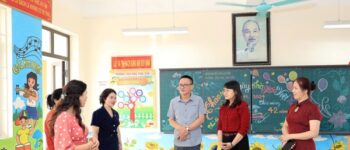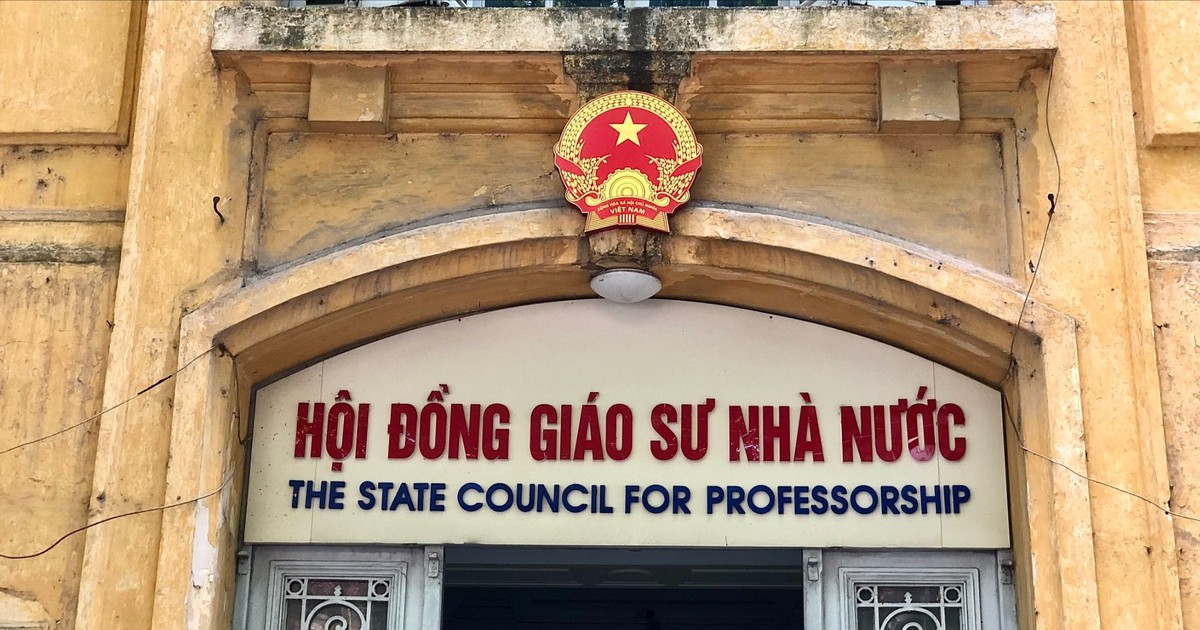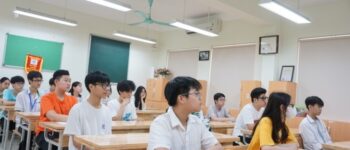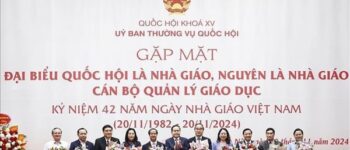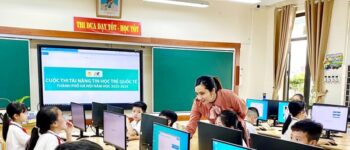Decision No. 1017/QD-TTg dated September 21, 2024 of the Prime Minister approving the Program “Developing human resources in the semiconductor industry to 2030, with a vision to 2050” sets a general goal to By 2030, Vietnam will train and develop high-quality human resources in the semiconductor industry. The program focuses on stages such as semiconductor circuit design, packaging and testing, while gradually approaching and mastering semiconductor manufacturing technology.
- Đề tham khảo môn Ngữ văn: Thay đổi cách hỏi giúp đánh giá năng lực HS tốt hơn
- Thế giới đang “khát” nhân lực tài năng những ngành công nghệ cao hơn bao giờ hết
- GV đánh giá đề tham khảo Ngữ văn dẹp học “tủ”, đề Sử có “thách” nhưng không “đố”
- Huawei Việt Nam khởi động cuộc thi công nghệ thông tin dành cho sinh viên
- 8 trường hợp bị tinh giản biên chế và chế độ được hưởng đi kèm, GV nên biết
The program also states that one of the important tasks is to use the state budget to invest, upgrade and modernize semiconductor laboratories. In particular, Hanoi University of Science and Technology is one of 18 higher education institutions expected to be given priority in investing in semiconductor laboratories to ensure training quality.
Bạn đang xem: HUST sẵn sàng đào tạo mỗi năm hàng ngàn kỹ sư, cử nhân cho công nghiệp bán dẫn
To train human resources in the semiconductor industry, Hanoi University of Science and Technology has established a special working group consisting of 19 experts. Accordingly, the school proactively analyzed training requirements, research, human resource needs and actual potential to plan plans according to the Government's direction, ensuring accurate and appropriate implementation.
Ensuring a training team of 3000-5000 engineers/bachelors for the semiconductor industry each year
Talking to reporters from Vietnam Education Electronic Magazine, Associate Professor, Dr. Truong Viet Anh – Head of the Science and Technology Department, Standing Deputy Head of the working group on implementing research and training in the field Semiconductor field, Hanoi University of Science and Technology commented:
The program “Developing human resources in the semiconductor industry to 2030, with a vision to 2050” was discussed and received careful comments from relevant parties since the Government determined the important role of the economy. This industry is the “core” of industries and the focus for socio-economic development in the coming period.
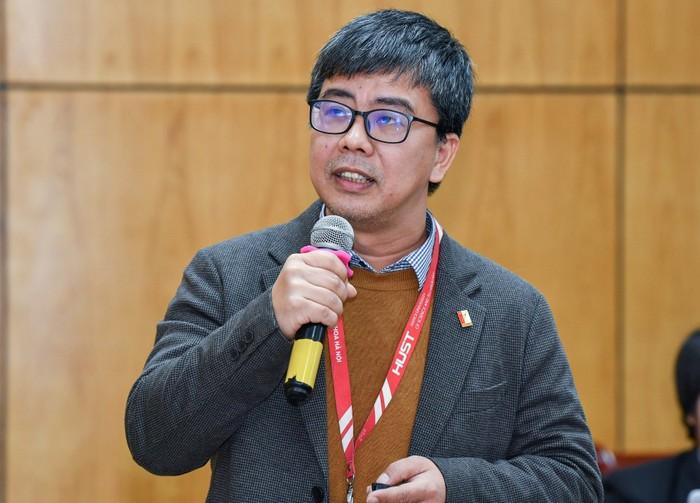
Associate Professor, Dr. Truong Viet Anh – Head of Science and Technology Department, Hanoi University of Science and Technology. (Photo: NVCC)
Teacher Viet Anh said that the leadership of Hanoi University of Science and Technology has proactively directed staff to research and evaluate professional issues and actively participate in meetings and collect opinions under the direction of Mr. Viet Anh. Ministry of Education and Training, Ministry of Science and Technology, Ministry of Planning and Investment and other relevant ministries and branches.
“We had to consider many factors such as training programs, training capacity, physical, financial and human resources. At the same time, we also evaluate cooperation resources, especially from reputable domestic training units and international partners from countries with strong development in the semiconductor industry such as the US, Northeast Asia, China, Australia and Europe. Through that, we build undergraduate and postgraduate training plans, as well as reasonable enrollment plans, to achieve the common goal of providing 50,000 human resources with university degrees or higher for the industry. semiconductor by 2030.
For a high-tech industry like semiconductors, focusing on investing in facilities for training and research is one of the prerequisites along with the resources of experts and lecturers of educational institutions. sex. The government has policies to encourage high technology in general, especially in the field of semiconductors, thereby helping higher education institutions, businesses and investors have more motivation to improve the quality of training. create and use highly qualified human resources. The goal is to help Vietnam become a developed industrial country by 2045, with socio-economic development based on scientific and technological progress,” Mr. Viet Anh stated.
Currently, Hanoi University of Science and Technology has nearly 1,200 lecturers and scientists. Of these, 76% of lecturers have doctoral degrees, most of whom are trained from advanced countries. In addition, the school has a cooperation network with nearly 300 domestic and international organizations, businesses, and universities. In addition, the school also proactively orients and continues to attract many international experts and scientists, strengthening research cooperation to form a training, research and development ecosystem in the field of sales. leading to medium-term plans until 2030 and long-term plans until 2045.
Xem thêm : Tuyển sinh vào 10 nếu bốc thăm môn thi thứ 3 là môn tích hợp, HS sẽ rất vất vả
In addition, a team of scientists and experts from universities and international corporations in the field of semiconductors are being focused on by Hanoi University of Science and Technology and strengthening cooperation for sustainable development of the industries. industry, especially semiconductors and artificial intelligence.
According to Decision 1017/QD-TTg of the Prime Minister, Hanoi University of Science and Technology will work closely with the National Innovation Center (NIC) to implement instructions from the Ministry of Education and Training as well as such as the Ministry of Science and Technology, to promote training and proactive research to develop human resources and strengthen the team of experts in semiconductor technology stages in the coming time. Specifically, the staff and lecturers participating in training related stages in the school's semiconductor value chain number up to nearly 300 people who are lecturers from the schools of Electricity – Electronics, Materials, Mechanical, Chemistry and Life Sciences, Information and Communication Technology, Faculty of Technical Physics of Hanoi University of Science and Technology, not to mention collaborations from domestic and foreign partners.
Besides the schools under Hanoi University of Science and Technology, 6 research institutes under the school all have orientations towards developing applied research such as: industrial and auxiliary equipment, smart control circuit development, AIoT and applied AI, big data processing, AI Robots and unmanned devices as a basis for developing and applying sensor chips and control chips.
“In the immediate future, the school ensures enough staff to comprehensively train the technology chain to serve the semiconductor industry with 3000-5000 engineers/bachelors graduating annually. In addition, in the next 5-10 years roadmap , the school will recruit more experts and scientists in accordance with its scale and development strategy,” said the Head of the Department of Science and Technology, Hanoi University of Science and Technology.
Also according to teacher Viet Anh, to attract international scientists to work, it is necessary to prepare a good working environment, including a suitable income level to meet their living needs. This is a point that the school is trying to improve. Through the international cooperation network and alumni who are successfully studying abroad, the school has continued to attract human resources to supplement and develop the team, to meet the training requirements for students. majoring in the field of semiconductors.
Determine strategies to expand cooperation with domestic and international businesses
Associate Professor, Dr. Truong Viet Anh affirmed that the school is always a pioneer in effective cooperation, creating common benefits and sharing risks with domestic and foreign businesses. Specifically, the school has implemented many cooperative activities in semiconductor design with partners such as: Cadence Design Systems, Qorvo… in sponsoring degree training and serving to teach students in the design program. school microchip. South Korea's major semiconductor enterprise, Seoul Semiconductor Vina, has sponsored equipment for practical training laboratories for students in fields related to manufacturing, packaging and testing. At the same time, the school continues to coordinate with many large enterprises such as Samsung, Amkor, LG… in building long-term plans to supply human resources in the semiconductor industry.
For example, in August 2024, Hanoi University of Science and Technology signed a memorandum of understanding with the University of Arizona (USA) to promote cooperation in the field of semiconductors such as: building training programs. related to semiconductor technology and microchip technology; exchange of students, lecturers, learning materials, and research results; Promote the implementation of human resource training activities for chip and semiconductor development at schools.
Accordingly, Hanoi University of Science and Technology identified 4 strategies to expand cooperation with businesses participating in semiconductor training in the coming time.
Firstly, continue to expand and effectively implement cooperation programs with businesses, deploy specific and in-depth cooperation activities with businesses in the semiconductor field;
Second, strengthen and promote business participation in semiconductor training programs. Develop training programs that meet business requirements; Invite business experts to participate in teaching and sharing knowledge in the field of semiconductors with students;
Third, deploy many internship courses, especially corporate internship semesters for students in semiconductor majors at businesses in the business ecosystem in cooperation with Hanoi University of Science and Technology.
Xem thêm : Đề xuất cho sinh viên vay tín dụng lãi suất 0% nhưng phải có cam kết
Fourth, promote sponsorship cooperation from businesses: software, equipment, practice laboratories, and implementation training laboratories for students in the semiconductor industry.
To promote research and master high technology, Hanoi University of Science and Technology determines that the school's consistent policy is to focus on investing in facilities for research, research facilities and equipment. to promote the training of future engineers, experts, and scientists for society.
In recent times, the school has improved its governance model according to the standards of advanced schools in the world, while actively integrating and building a model of university autonomy as required by the Ministry of Education and Training. create. The school identifies the motto “For the success of learners, for teachers to shine” as the direction for all activities. To meet the needs of social development and improve technological products, the school needs to build a strong innovation ecosystem, encouraging the spirit of entrepreneurship and creativity in both staff and students.
To carry out the above task, the research and creative environment is given top priority by Hanoi University of Science and Technology. In the field of semiconductor industry, many research institutes and laboratories have been invested, with 30 new laboratories modernizing equipment through the SAHEP project (Higher Education Quality Improvement Project funded by World Bank sponsored, approved investment policy in Decision No. 323/QD-TTg dated March 14, 2017 and adjusted investment policy in Decision No. 240/QD-TTg dated February 22 /2022).
Recently, the project “Smart digital technology and artificial intelligence laboratory” chaired by the Ministry of Education and Training also opened up opportunities to improve computing and data processing capacity, supporting research. research and training on semiconductor technology combined with AI. With the existing laboratory network, the school will continue to attract investment to expand to serve the strategy of training human resources in the semiconductor industry. Therefore, support from the Government and international cooperation sources is essential.

Hanoi University of Science and Technology focuses on investing in laboratories to ensure effective quality training. (Photo: School website)
Based on long-term goals, training programs will continue to be updated to ensure that targets on quantity and quality of human resources for the semiconductor industry are met and exceeded by 2035 and with a vision of 2045-2050. In order to learn from advanced countries, the school has developed plans and solutions to optimize efficiency from investment sources.
“First of all, the school continues to promote the sharing and connection of training programs between higher education institutions, focusing on specialized engineering programs in semiconductors and related technical disciplines, and at the same time At the same time, strengthen alliances between educational institutions to promote domestic lecturer resources.
In addition, the school promotes cooperation agreements to form shared laboratories between higher education institutions. At the same time, establish regulations and guidelines on asset exploitation, budget spending, as well as recruitment and use of international experts. This will support investment reception and management of laboratories. On the other hand, the semiconductor industry development program still needs to ensure sustainability to strengthen domestic internal resources and take advantage of new opportunities for the country,” Associate Professor, Dr. Truong Viet Anh expressed.
In order to meet the Government's requirements on developing human resources for the semiconductor industry, Hanoi University of Science and Technology is one of five pioneering higher education institutions in establishing semiconductor training alliances, including: Hanoi National University, Ho Chi Minh City National University, Hanoi University of Science and Technology, University of Danang and Posts and Telecommunications Institute of Technology.
Thu Thuy
https://giaoduc.net.vn/hust-san-sang-dao-tao-moi-nam-hang-ngan-ky-su-cu-nhan-cho-cong-nghiep-ban-dan-post246272.gd
Nguồn: https://dut.edu.vn
Danh mục: Giáo Dục
